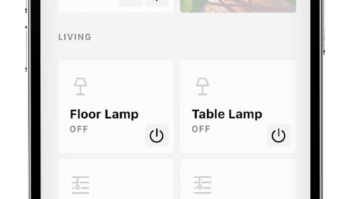It’s important to learn from our mistakes. I know because I’ve made my share of them, especially when it comes to crafting profitable service plans.
Prior to launching OneVision in its current form, the company used to operate as an integrator, servicing families in the Boston area. As an integrator, we had a unique business model which focused almost exclusively on monetizing service through recurring monthly revenue. In working through numerous iterations of our service plans, we made plenty of missteps that ended up costing us a lot of money. One that stands out in particular — a trap that I see integrators all over the country fall into regularly — was the decision to think with our own wallets instead of those of our clients.

Image: Thinkstock
Rewind back to 2013. We had recently finalized Version 4 of our service plan offerings. Like all the plan overhauls that came before it, the goal of these changes was to improve both our client experience and profitability. Although in hindsight we would have been well-served to dramatically simplify our offerings, instead we made the mistake of adding more. By this point, our plans had grown to include a whole host of benefits that were difficult to provide and even harder to track, and our expansion added two benefits that today I adamantly advise against: discounted hourly rates and bundled hours.
With the benefit of experience and hindsight, I now understand why such offerings don’t work. (http://onevisionresources.com/bundled-services/) They’re not what the client needs and they’re not profitable. So, why did we include them? We offered these features because we weren’t confident in the value proposition of our plans without sweetening the pot. We were breaking a cardinal rule in product development by evaluating our feature set and pricing against our own perception of value instead of that our clients. In short, we were selling with our own wallets, not with theirs. Did we succeed in selling plans? Yes, but they weren’t very profitable.
Does this sound familiar? If you count yourself amongst those who have tried at one time or another to sell premium service plans, the answer is probably “yes.” Of all of the questions I field from integrators, how to structure these plans is one of the most common. So much so that this topic represents one of the core components of my upcoming CEDIA workshop, “Service Plans are Easy, Execution is Hard.” Like many things in life and business, the best answer here is in fact the simplest one. Of course, I didn’t know that back in 2013.
The majority of integrators I speak with fall into the same trap I did — believing that simple plans with straightforward offerings like guaranteed priority same-day support and proactive monitoring won’t be attractive to their clients. They throw in everything but the kitchen sink. Ironically, although it’s easier to feel confident pitching these plans, our experience taught us that the complication actually turned many of our clients off. So not only were the bells and whistles unprofitable and unnecessary to drive value, but in some cases they actually cost us sales!
Only when we began to see things through our clients’ eyes did we finally turn a corner. We began to appreciate that most of our clients valued time over money. We began to back down our feature sets and clarify our message. As it turned out, uncomplicated plans positioned to save our clients time and headaches sold just as well, if not better, than their complicated predecessors. The plans were easier to explain, easier to manage, and more profitable. The only shame was that we didn’t discover the secret sooner. Thankfully, you can learn from our mistakes The sooner you start looking at the value proposition through clients’ eyes, the sooner you’ll see that effectively crafting service plans isn’t nearly as complicated as most people think it is, as long as you’re thinking with the right wallet.






